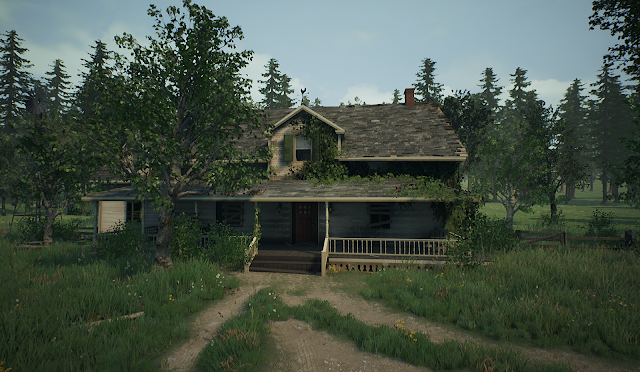I'm not dead! Just been a bit busy, but I've spent some time tidying up the project and thinking of ways to stay more organized and work faster. One of the things I did was revisit Mel script so I'd be able to write myself some tools to improve my workflow for this as well as any future projects.
I noticed that my projects were always becoming messy and it was really slowing me down, so I rethought my folder structure and then wrote a little Maya tool to help keep myself organised and work faster:
It let's me add/remove categories for assets and specify export folder for them, for instance Foliage, House Interior, Exterior Props etc, and then assign them to any mesh in the scene which then allows for fast one-click exporting as well as having quick access to all of the assets if I want to open them or insert them into the current scene, without having to search through the folders.
It also allows for one-click texture exporting, it grabs the textures plugged into the shader of the model, asks me whether it is a tiling or unique texture and then copies them into the correct folder inside my project directories.
Besides that, it has some smaller features that I found are quite useful, for example creating a new asset, which allows me to pick a starting shape i.e. cube / cylinder / plane etc., and creates a new scene with it as well as a scale reference on the side of it which is semi transparent and added to a layer that is set to be Render-only. Apart from that I am also able to add a new scale reference in and quickly apply a checker material to a selected object.
I found that the tool works really well together with UE4's auto import. I made it scan the folders to which my Asset Manager tool exports the models and textures to, and auto import them into the project. Works super smoothly!
Next on the list is to identify some of the common workflows I use while creating certain type of assets for example foliage or architecture and create a tool to have quick access or to automate some of the aspects.
I've also looked into hotkeys which for whatever reason I never really used much in the past. Maybe because of the clunky pre-maya 2016 hotkey editor, which they have now updated to be much nicer to use. I've set up keys for some of the most common tools I use e.g. extrude, bridge, multi-cut, merge verts, bevel etc., as well as some custom commands. One trick I found to minimize the amount of key combinations, is to assign different commands to the same key combination but based on the component that is selected. For example having edges selected activates the Connect tool, having whole model selected activates Add Edge Loop, and having faces selected activates multi-cut. This requires some Mel (or python) scripting, but it works really well ^^























































